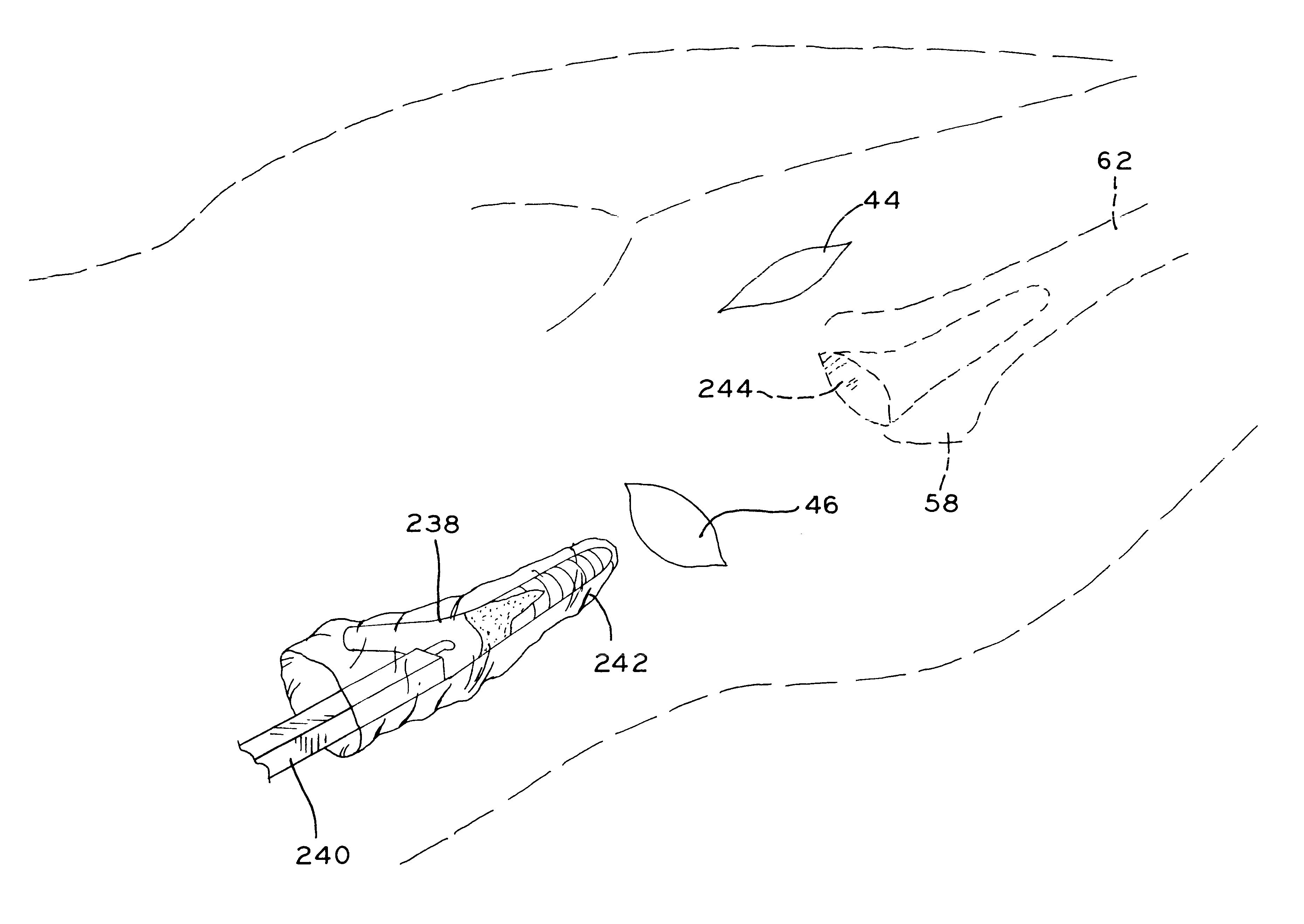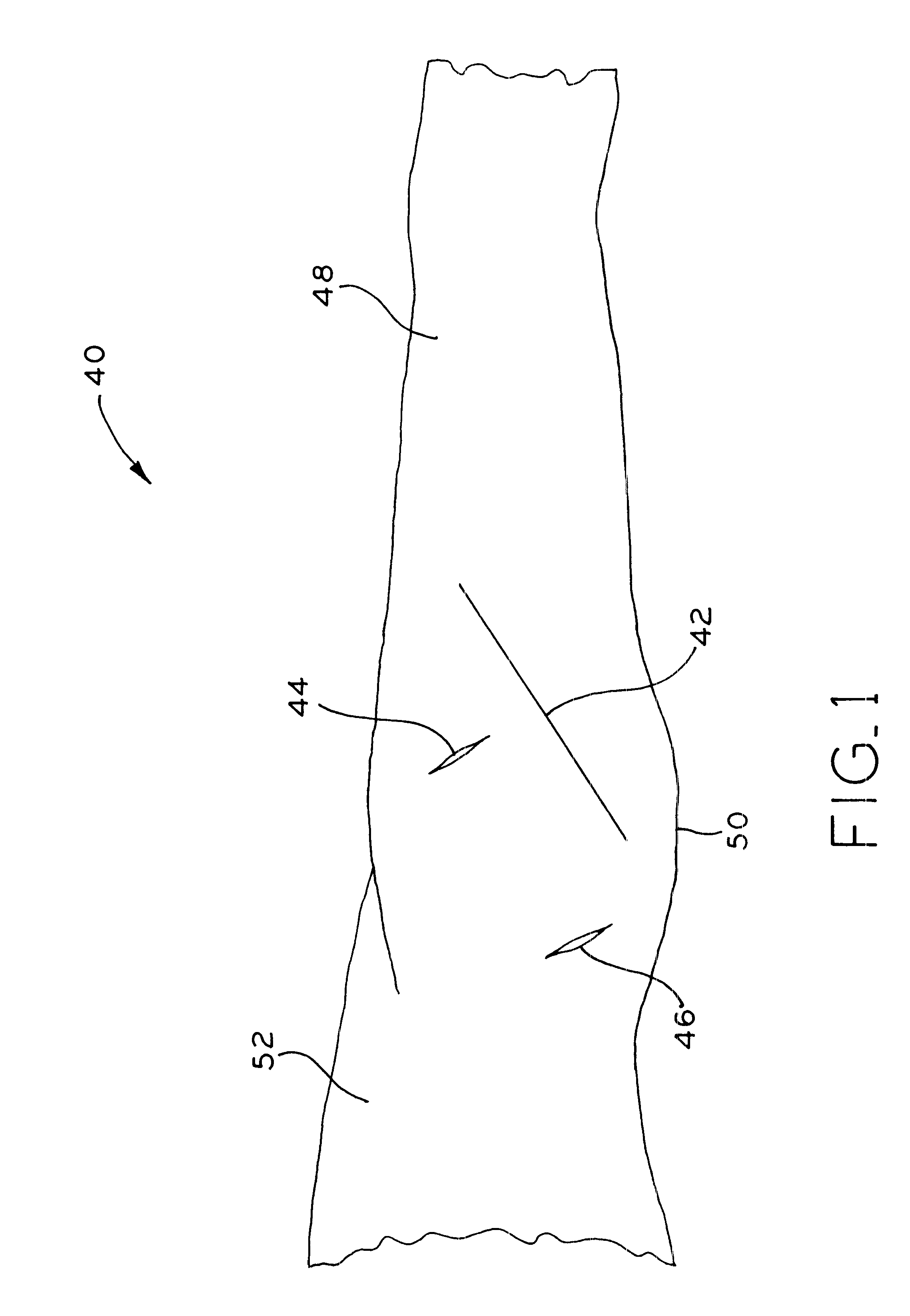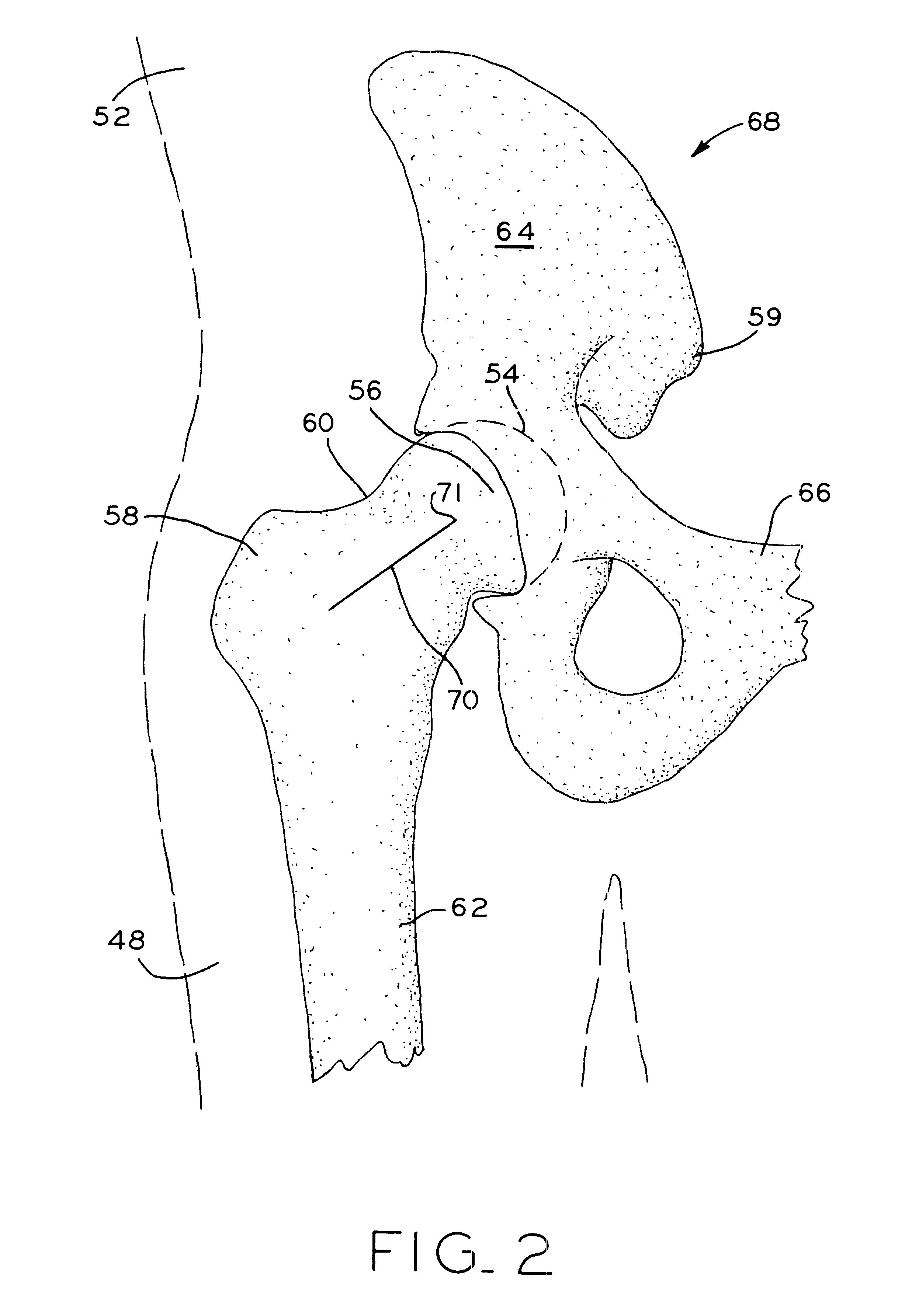Method and apparatus for performing a minimally invasive total hip arthroplasty
a hip arthroplasty and minimally invasive technology, applied in the field of total hip arthroplasty, can solve the problems of long rehabilitation time of patients, weeks or perhaps months before the soft tissue violated during surgery can be fully healed,
- Summary
- Abstract
- Description
- Claims
- Application Information
AI Technical Summary
Benefits of technology
Problems solved by technology
Method used
Image
Examples
Embodiment Construction
makes reference to a nested posterior retractor configuration. It will be understood by those skilled in the art that if the nested configuration is not utilized, each individual component of posterior retractor 122 will be inserted and removed through posterior incision 46 as necessary.
FIG. 16 illustrates preparation of femoral canal 148 to receive rasp 204 (FIG. 19). Guide tube 124 is removed from posterior retractor 122 and end cutter 150 (FIG. 17A) is inserted through reamer tunnel 126. FIG. 18 illustrates end cutter 150 positioned within reamer tunnel 126. End cutter 150 includes elongate aperture 160 through which guide wire 146 passes and guides end cutter 150. End cutter 150 is actuated by any of the many actuating devices known in the art. After end cutting is complete, end cutter 150 is removed through reamer tunnel 126 and reamer 151 (FIG. 17B) is inserted therethrough. Reamer 151 includes reamer guide aperture 161 through which guide wire 146 passes an guides reamer 151 ...
PUM
 Login to View More
Login to View More Abstract
Description
Claims
Application Information
 Login to View More
Login to View More - R&D
- Intellectual Property
- Life Sciences
- Materials
- Tech Scout
- Unparalleled Data Quality
- Higher Quality Content
- 60% Fewer Hallucinations
Browse by: Latest US Patents, China's latest patents, Technical Efficacy Thesaurus, Application Domain, Technology Topic, Popular Technical Reports.
© 2025 PatSnap. All rights reserved.Legal|Privacy policy|Modern Slavery Act Transparency Statement|Sitemap|About US| Contact US: help@patsnap.com



